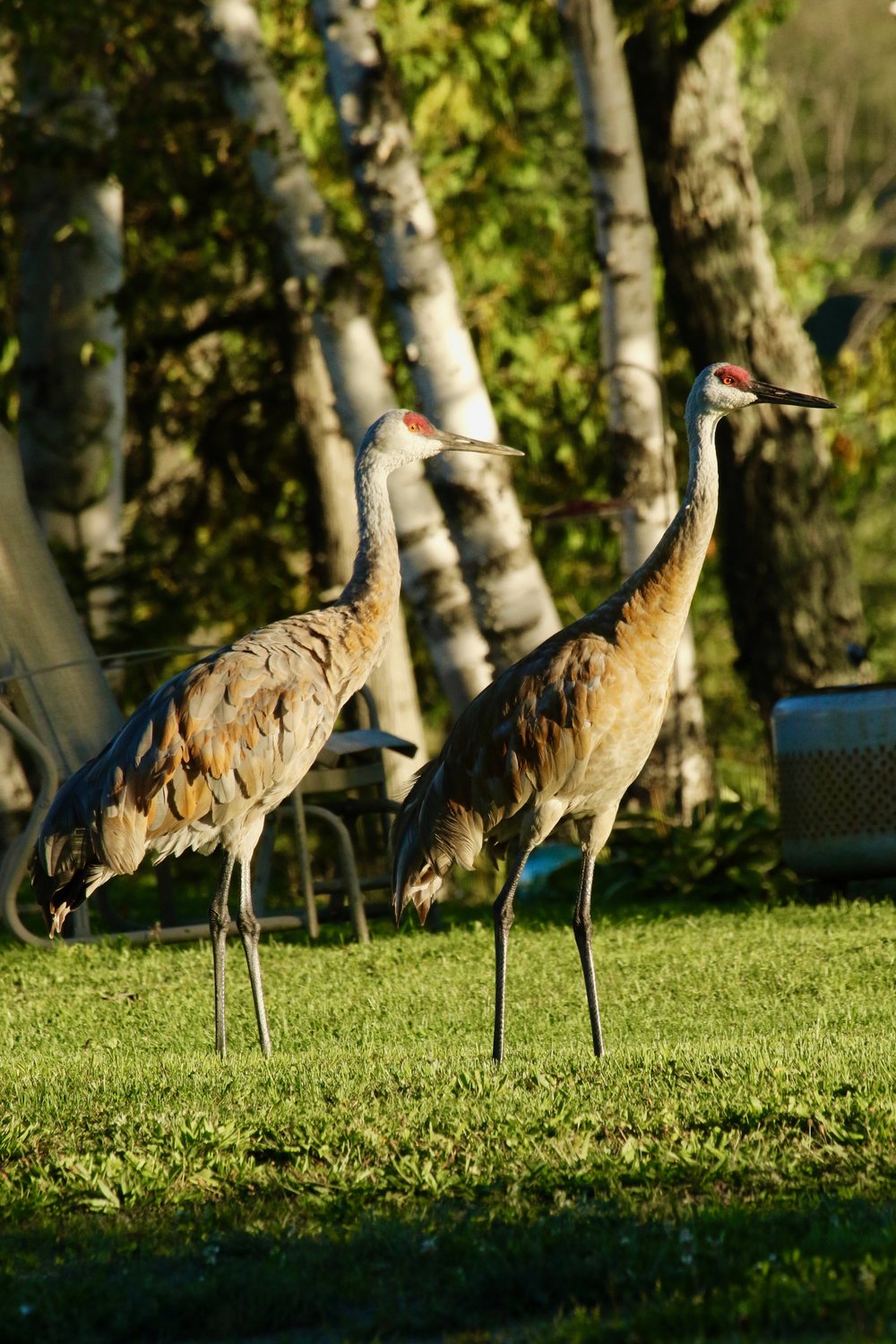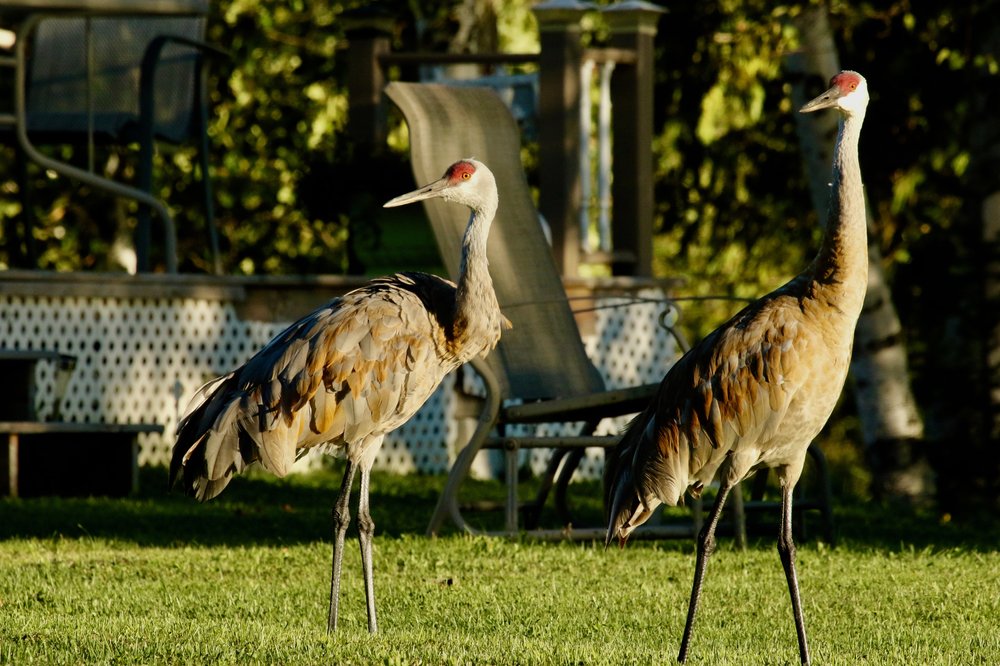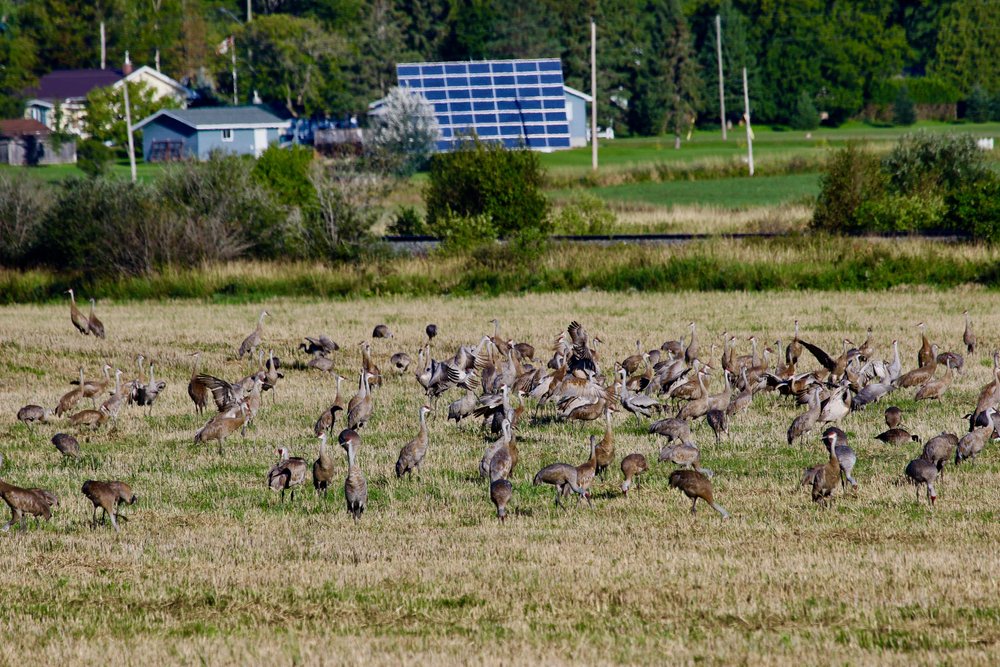When I first heard the rattling call I was walking along a small lake in Ontario, east of Sault St. Marie and West of Sudbury. I’d been driving my little camper for eight hours, after getting up in the lovely Two Rivers Campground in Algonquin Provincial Park. Since I was tired and since it was late in the day I thought: you are hallucinating. There can’t be Sandhill Cranes here in the far north in early September.
When, at 3 in the morning, I again heard that distinctive call I thought: this is a dream, no cranes.
In the morning, I emerged from the cocoon that is my little camper and scanned the range of RVs in the tidy campground, the set up mobile homes for those who came through the season, the more portable campers that were there a night or two. My eye was drawn to a bird feeder tempting in Goldfinch set up near one of the mobile homes. And there stood two cranes. Not plastic statues of cranes, as you might imagine in such a campground, real winged, breathing birds. They tip toed as delicately as a long legged bird can, inspecting the short grass and only half-wary of me and a woman walking her dog. Cranes. In Canada.


I’ve always seen Sandhill Cranes in Arizona, the desert, and so think of them as birds that love the heat and dry. They fly into Wilcox, east of Tucson, by the hundreds, thousands, landing and taking off all flailing legs and wings. But there never seem to be actual collisions. I’ve stood, mesmerized by the loud, purring sound of the birds, and by the sheer numbers, all come to spend the winter there where it’s warm, where there’s food.
To see the birds there in Canada, on their migratory path south, perhaps to Wilcox, was to witness one of the great events in the natural world. Scientists have spent a lot of time studying migration, and still it remains a half secret (some aspects of how birds navigate are understood). I like this. I prefer when we don’t know, the natural world remaining a wondrous mystery, something to appreciate rather than master. Whenever I encounter a migrating bird—spring and fall—I marvel over the intersection of our lives. How was it that these Cranes, on their precarious path south, had landed here at this campground by a northern lake and that I had as well? The odds seemed fantastic. I already felt lucky that I had managed to spend the night in a clean, quiet, beautiful campsite, now I felt double lucky that it came complete with Cranes.
This, it turns out, is my favorite sort of birding: to travel some place beautiful and to be surprised by what I find, what I see, what I hear. If you bird in this way—with no expectations, with eyes and ears open, ready to see what you can—you can never be disappointed. The disappointed birder is the one who goes out looking for Cranes and doesn’t find them. That I wasn’t even hoping for, or expecting the Cranes, made it feel not like a bird sighting but a miracle sighting.

As I pulled out of the campsite, a woman who had been photographing the sunrise, shared a smile and an appreciation for the Cranes. “Keep an eye out when you drive West,” she said, “there are fields of Cranes.” And she was right.